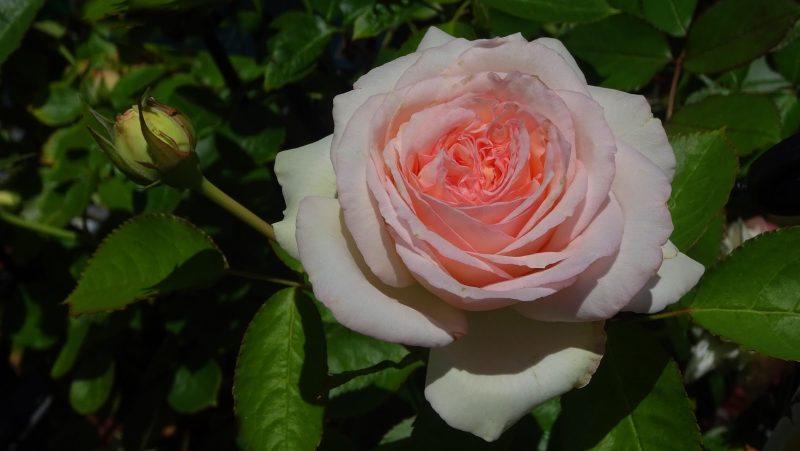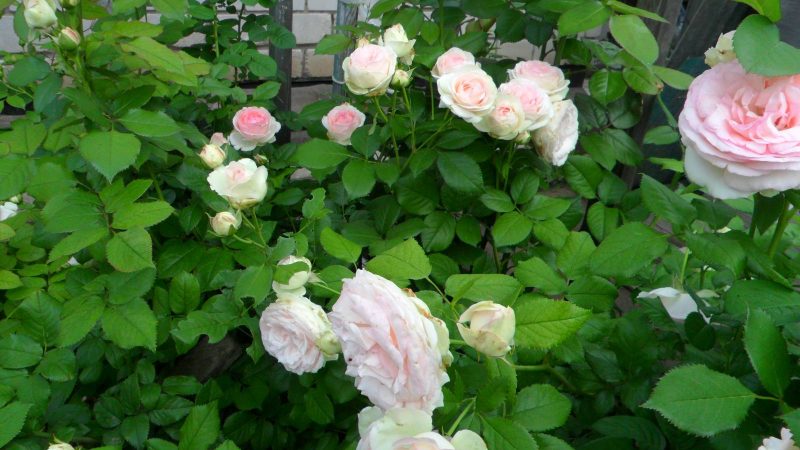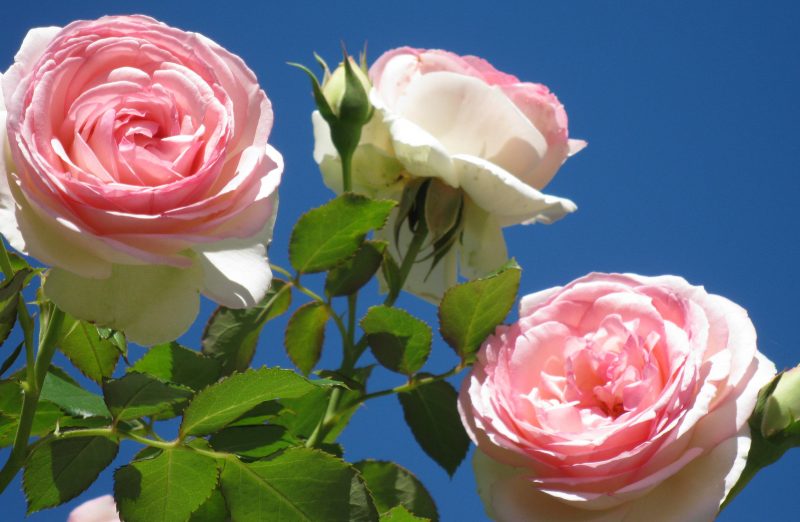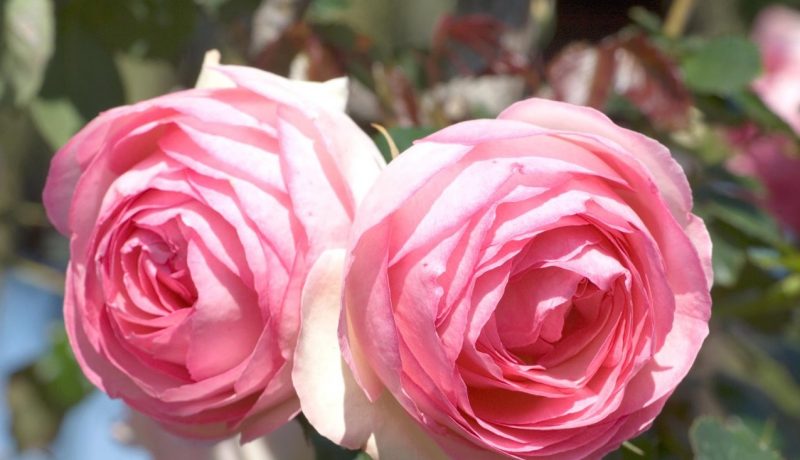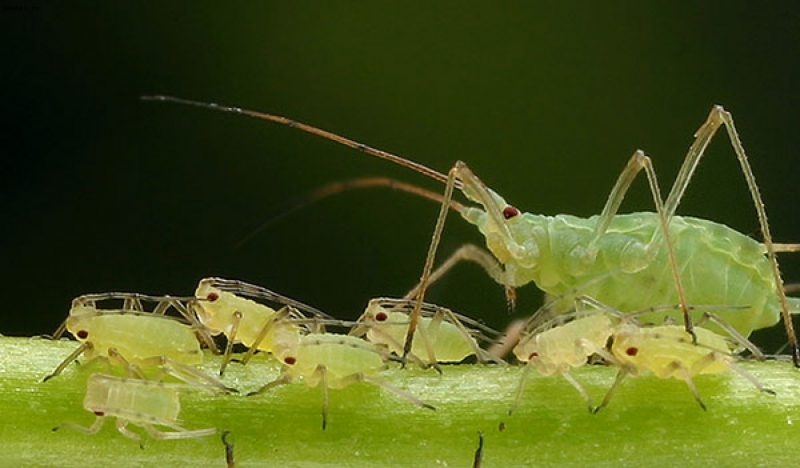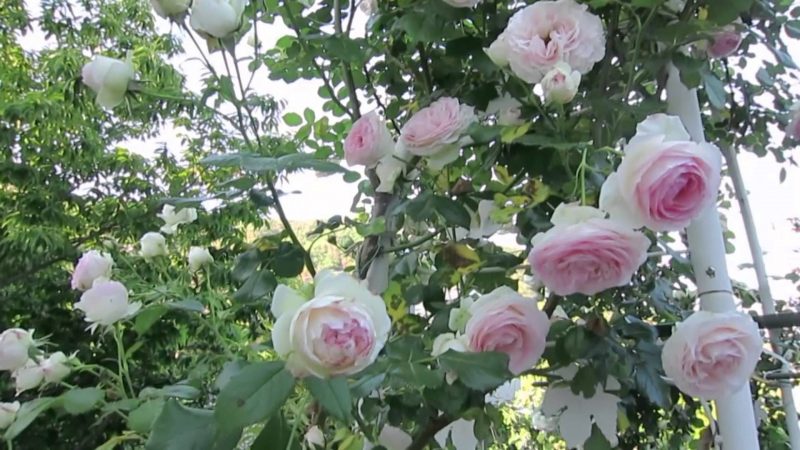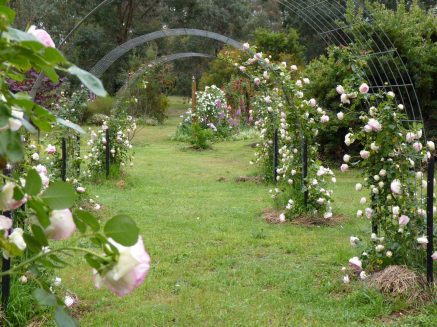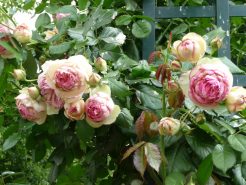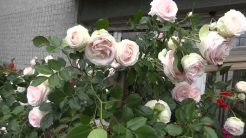Rose "Pierre de Ronsard" belongs to the climbing, and its magnificent flowers will certainly become the main decoration of the garden.
Material Content:
Characterization and description of the variety
This climbing rose is remontant, and can reach a height of 3 m. The bush grows to a width of 2 m in width. The rose usually reaches such sizes by four years of age, since the variety does not differ in growth rate.
The dry description of the rose “Pierre de Ronsard” is unlikely to be able to convey all its beauty. Gorgeous rose flowers reach a diameter of 10 cm, full, have up to 70 petals in one bud. The petals are painted in cream color. Coloring can vary to pale pink. The leaves of the shrub are hard, shiny. Rose almost does not smell.
The rose variety “Pierre de Ronsard” has the following advantages:
- blooms profusely and twice;
- has a high immunity to diseases;
- It has excellent frost resistance.
A rose is grown very simply, and its flowers are striking in their beauty. Many gardeners believe that this variety is old, in fact, it was bred not so long ago.
The scheme of planting seedlings
The site for planting this shrub is chosen protected from the north wind, but with good air circulation. It is optimal if the rose is planted on the eastern side of the site. The plant is easily put up with partial shade.
The variety prefers fertile soil. If the soil is depleted, compost should be added to the pit during planting.
To plant seedlings, you must:
- Dig out planting holes about 60 cm deep.
- Prepare a mixture of 3 parts of garden soil and 1 part of compost, add a little ash.
- The seedling is lowered into the pit and the space between the roots of the prepared soil mixture is filled. The seedling must be lowered into the pit so that after watering it turns out to be a vaccination site deeper by 3 cm.
- When the rose is planted, it must be sprinkled with earth.
When planting several bushes between them leave about 3 meters. If roses are planted near a house or a fence, then planting holes must be dug at a distance of 50 cm from them. The roots of the plant should freely develop in all directions.
Cultivation and care
Variety "Pierre de Ronsard" from other varieties of roses is distinguished by surprising unpretentiousness. Watering the bush should be plentiful, every 5 days.
It is very important not to wet the leaves, as moisture can lead to the development of diseases!
The variety is repairing, and the rose spends a lot of energy on the second flowering. Therefore, it must be fed. Fertilize in 3 stages.
- The first time, as soon as the snow falls and the first warm days are established, organic top dressing is applied under the bushes. It is best to fertilize the roses with compost or seasoned manure.
- In mid-July, plants are fed a second time with mineral compounds.
- At the beginning of the growing season, as soon as the buds begin to open, fertilizing with nitrogen is added to stimulate the roses to build up green mass.
Roses of this variety must be tied up. It is advisable to put supports on which the lashes will be fixed in an arc.
Shoots should be slightly deflected to the sides, as this stimulates lush flowering.
If the rose is vaccinated, then it is necessary to remove wild shoots that grow below the vaccination. If this is not done, then over time they will drown out the scion.
A very important care measure is mulching. Mulch helps enrich the soil, and also greatly facilitates the care of roses. First, all weeds are removed from the soil, they are loosened, and then they are covered with a layer of up to 6 cm of mulch. When the shelter rots, it is mixed with the ground and the process is repeated again. You can use shredded old paper or cardboard, mowed lawn grass, rotted manure or sawdust, peat.
Rose propagation methods
Do-it-yourself roses propagation is a very fascinating activity, and it is possible to plant several Pierre de Ronsard bushes on your site in several ways.
- In the store you can buy seeds that are germinated in the spring in a warm room, and with the onset of sustainable heat, they are planted in the garden. The cultivation of seedlings of this variety in its agricultural technology is practically no different from the cultivation of other flower crops.
- In the middle of summer, cuttings are still being carried out, for which they take strong, slightly lignified shoots and cut them into twigs about 15 cm long. Cut the cuttings into moist soil and tighten the boxes with foil. When the roots appear, the cuttings are transplanted into the garden.
- They are used for propagation and layering, for which they drip in the spring the lower shoot of the bush and fix it with a wooden horn. In order for the layering to give roots faster, it is necessary to make several small cuts on its underside with a sharp knife. In the autumn, the young plant is separated from the mother bush and transplanted to a new place.
- Vaccination is a very time-consuming method, and it is used only by experienced growers to breed rose seedlings for sale.
It is interesting:how to prepare roses for winter
Protection against diseases and pests
Although this variety has a strong immunity to the appearance of various diseases, it is still necessary to carry out preventive treatment of bushes in early spring and before winter. To do this, it is quite enough to spray the bushes with a 1% solution of Bordeaux fluid.
Of the pests, the culture is attacked by aphids, which eats buds and can lead to the death of a bush. If the parasite is detected, it should be washed off with a strong stream of water, and then treat the roses with an insecticide.
Pruning and shelter for the winter
For the first two years, the rose bush of the variety under discussion does not need pruning. It is enough to remove dry lashes only in the spring, and cut off wilted flowers in the summer.Adult bushes are subjected to forming pruning. To do this, all lateral growths are shortened by 2/3 and then old shoots are cut out every three years.
Although this variety is winter-hardy, it is still worth sheltering bushes in the middle zone of the country for the winter.
For Pierre de Ronsard, because of its size, this process is quite laborious. Basically, the bushes are wound vertically, linking the branches and lining them with spruce branches.
You can also build a greenhouse, for which arc is inserted into the ground, which is covered with covering material from above.
Use in landscape design
It is impossible to imagine a garden in which roses do not bloom. "Pierre de Ronsard" - is amazingly unpretentious, and it can be grown in almost any garden without even having much experience in floriculture.
- Rattled roses allow you to fix unsightly corners when using them in garden design - they can cover a fence or an ugly wall.
- If desired, they use climbing roses as a living fence, which will be practically impassable. A hedge of magnificent flowers will close the site from prying eyes and muffle the noise from the street.
- Perfectly Pierre de Ronsard looks in a single landing in the middle of an emerald lawn or against the backdrop of evergreen conifers. In this case, you will have to build vertical supports for the rose, to which long branches will be tied.
- The arches along which climbing roses curl are very attractive. Such living structures give the site a solemn and elegant look. The variety blooms twice, which is especially appreciated by landscape designers.
Roses are a magnificent decoration of any personal plot. For little attention they will thank colorful, long flowering.


